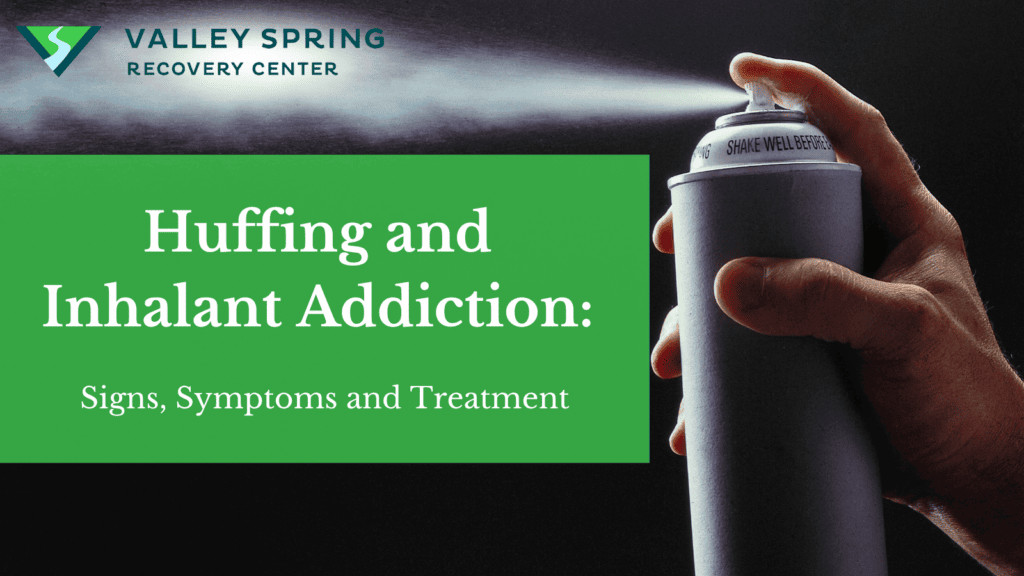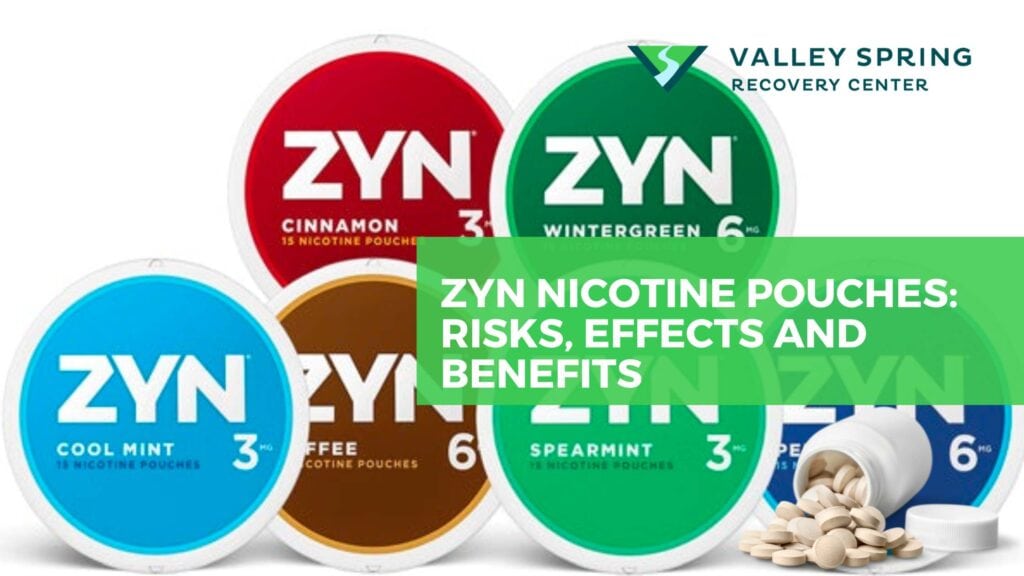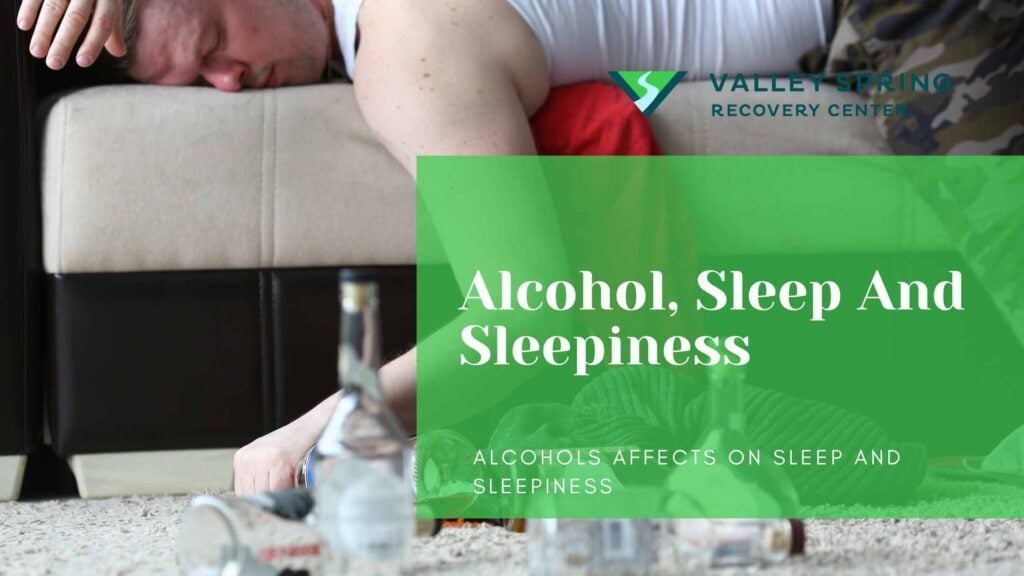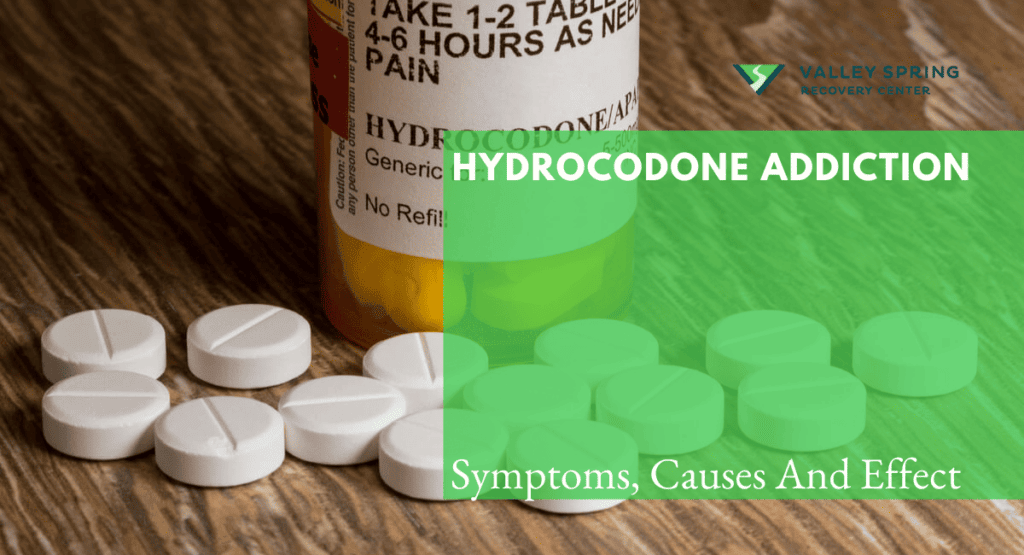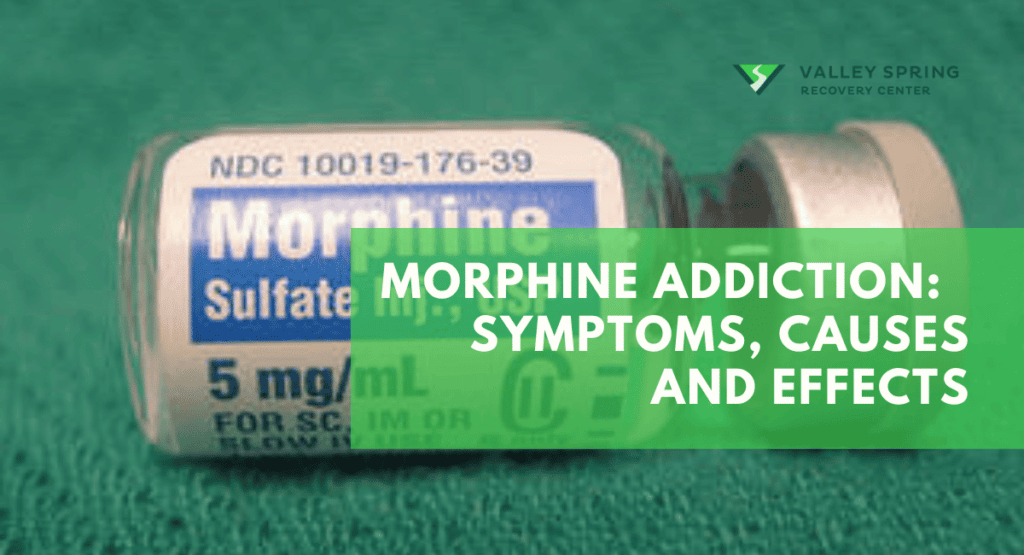Opiats are a class of drugs that include natural substances like morphine and synthetic opioids such as oxycodone. Understanding the signs, symptoms, and statistics of opiate addiction is crucial to be able to treat it effectively. Opiate addiction can lead to physical dependence, tolerance, overdose, and a range of negative health, social, and economic consequences. Recognizing signs like constricted pupils, drowsiness, and behavioral changes can facilitate early intervention and treatment.
What is An Opioid?
Opioids are a class of drugs that are naturally derived from the opium poppy plant (Papaver somniferum). They include substances such as morphine and codeine. Opiates act as central nervous system depressants and are known for their pain-relieving and sedative effects.
Chemically, opiates contain specific alkaloids that interact with opioid receptors in the brain and body, leading to pain relief, relaxation, and a sense of euphoria. These compounds have been used for centuries for their analgesic properties, but they also carry a high risk of dependence, tolerance, and addiction when misused or abused.
Opioids include heroin (diacetylmorphine), morphine, codeine, fentanyl, and oxycodone.
The terms “opioid” and “opiate” are related but have distinct meanings. Opiates are a subset of opioids and refer specifically to natural substances derived directly from the opium poppy, such as morphine and codeine. Opioids, on the other hand, is a broader category that includes opiates, as well as synthetic (like fentanyl and methadone) and semi-synthetic opioids (like heroin and oxycodone) that are manufactured to act like natural opiates. Both types bind to opioid receptors in the brain and can produce similar effects, but the term “opioid” covers a wider range of substances.
What Is Opioid Use Disorder (OUD)?
Opioid Use Disorder is a medical condition characterized by a problematic pattern of opioid use leading to serious psychological or physical distress. Symptoms include a strong desire to use opioids, increased tolerance, and withdrawal symptoms with cessation. The disorder affects over 16 million people globally and results in between 100,000 and 125,000 deaths annually according to different sources Dydyk et al., 2024; Vallersnes et al., 2019 and the 2022 Opioid Use Mortality Report by the CDC.
What Is The History Of The Opioid Crisis?
The historical use of opiates traces back to ancient civilizations like the Sumerians, Egyptians, and Greeks, who utilized opium from poppy plants for its pain-relieving properties in various forms, including raw consumption and as an ingredient in teas and tinctures.
By the 19th century, advancements in medicine led to the isolation of specific opiates like morphine and codeine, with morphine becoming extensively used as a painkiller during the American Civil War.
The development of the hypodermic needle in the late 19th and early 20th centuries introduced injectable forms of opiates, enhancing their potency and addictive potential, which eventually paved the way for the synthesis of synthetic opioids like heroin, initially marketed as a non-addictive morphine substitute before its high potential for abuse was recognized.
The prevalence of opiate addiction has reached alarming proportions, casting a shadow over societies worldwide. As the misuse of opiates continues to rise, understanding the extent of this crisis and its far-reaching impact has become an imperative concern for public health and policy efforts.
The opioid crisis, a devastating public health emergency, has evolved through three distinct waves since the late 1990s, profoundly impacting communities across the United States and beyond. Here is an overview of how this crisis has unfolded over the years:
- The First Wave: Increased Prescribing of Opioids (1990s onwards)
- The crisis began in the late 1990s, fueled by an increase in prescribing opioids for pain management. Pharmaceutical companies reassured the medical community that patients would not become addicted to prescription opioid pain relievers, leading to widespread use. Consequently, overdose deaths involving prescription opioids (natural and semi-synthetic opioids and methadone) began to rise.
- The Second Wave: Heroin (2010)
- By 2010, as the dangers of prescription opioids became clearer and prescribing practices were tightened, many individuals addicted to prescription opioids transitioned to heroin, which was cheaper and more accessible. This shift led to a significant increase in heroin-related overdose deaths.
- The Third Wave: Synthetic Opioids (2013 onwards)
- The third wave began in 2013, marked by a dramatic rise in overdose deaths involving synthetic opioids, especially illicitly manufactured fentanyl. Fentanyl is significantly more potent than heroin and prescription opioids, and it is often mixed with heroin or counterfeit pills, which increases the risk of overdose.
| Wave | Description | Consequences |
|---|---|---|
| First Wave | Began in the late 1990s, characterized by increased prescribing of opioids for pain management. Pharmaceutical companies reassured medical professionals that patients would not become addicted to opioid pain relievers. | Surge in overdose deaths involving prescription opioids. Increased addiction rates due to widespread availability and prescribing practices. |
| Second Wave | Started in 2010, marked by a rise in heroin use as prescriptions for opioids became harder to obtain. Many individuals who had developed dependencies on prescription opioids turned to heroin, a cheaper and more accessible alternative. | Sharp increase in heroin-related overdose deaths. Transition from prescription opioid abuse to heroin marked a significant escalation in the severity and danger of the crisis. |
| Third Wave | Began in 2013 with significant increases in overdose deaths involving synthetic opioids, particularly illicitly manufactured fentanyl, which is much more potent than heroin and other prescription opioids. | Exponential increase in overdose deaths due to the potency of fentanyl and its analogs. Fentanyl often mixed with other drugs, increasing the risk of accidental overdoses. Spread of fentanyl into various drug markets. |
What Are The Opioid Use Disorder Statistics?
Global statistics on opiate addiction highlight a severe and widespread health crisis. According to the United Nations Office on Drugs and Crime (UNODC), around 53 million people worldwide used opioids in 2019, highlighting the scale of this issue, with a significant number of users concentrated in Asia.
Opioid use disorder affects 16 million people globally and 2.1 million in the United States according to Vallersnes OM, Jacobsen D, Ekeberg Ø, Brekke M.’s observational cohort study in 2019.
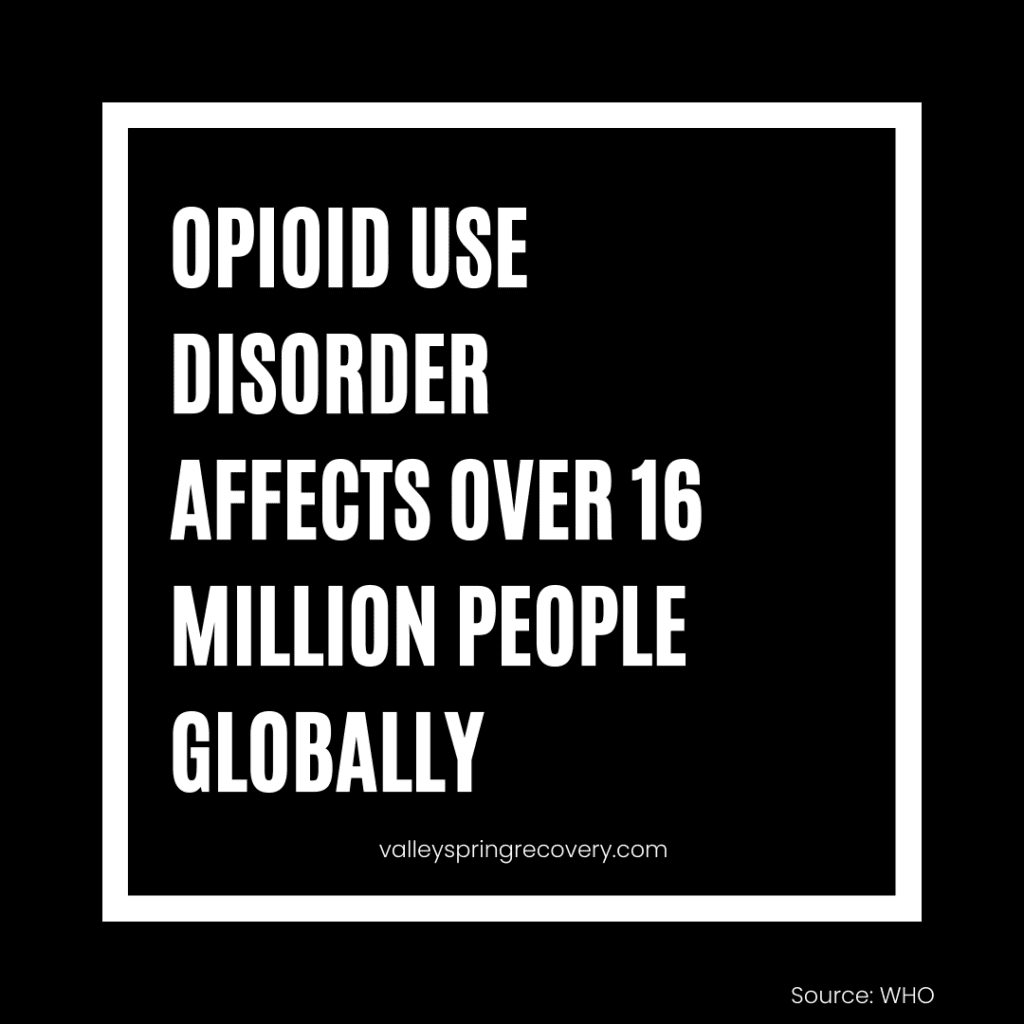
The opioid crisis continues to evolve with the changing drug market, particularly with the widespread availability of synthetic opioids. The market dynamics for illicitly manufactured fentanyl and its analogs are constantly shifting, often found in combination with other drugs like heroin and cocaine.
From 1999 to 2021, the number of overdose deaths increased more than sixfold. Specifically, from 2020 to 2021, the total number of drug overdose deaths rose by over 16%, with opioids involved in over 75% of nearly 107,000 deaths in 2021 alone.
During this period, opioid-involved death rates increased by over 15%, while prescription opioid-involved death rates remained stable. Conversely, heroin-involved death rates decreased by nearly 32%, but synthetic opioid-involved death rates, excluding methadone, increased by over 22% according to CDC data on the opioid crisis.
The opioid crisis in the United States has escalated dramatically from 1999 to 2021, with the number of overdose deaths increasing more than sixfold. Specifically, the total number of drug overdose deaths rose by over 16% from 2020 to 2021 alone, with opioids implicated in over 75% of nearly 107,000 deaths in 2021. Here’s a detailed look at how opioid use and misuse have evolved, highlighting both prescription and illicit usage patterns:
How many people abuse Prescription Opioids like Hydrocodone?
- Prescription Trends:
- In the 1990s, there was a substantial increase in opioid prescriptions in the U.S., largely to manage chronic illnesses, post-surgical pain, and injuries. This led to widespread opioid availability, raising concerns about potential abuse and misuse (NCBI).
- Hydrocodone, in particular, has been one of the most commonly prescribed and misused opioids. For instance, in 2011, hydrocodone prescriptions outnumbered all other medications, with nearly 136 million prescriptions written.
- Hydrocodone Abuse:
- Most hydrocodone abuse occurs in the U.S., as other nations have restricted or banned its medicinal use. Despite reductions in prescriptions — from 93.7 million in 2016 to 83.6 million in 2017 — hydrocodone remains the most common opioid distributed nationwide (SAMHSA).
- In 2021, 46.9% of the 8.7 million adults who abused prescription painkillers misused hydrocodone-containing drugs, making it the most widely abused class of prescription pain treatments.
What Are The Opioid Overdose Death Statistics?
- Misuse Demographics:
- In 2020, of the 75,198 individuals aged 12 and older who used prescription painkillers, 37,657 were reported to have used hydrocodone medications.
- People over the age of 26 are more likely to misuse prescription painkillers compared to younger individuals between the ages of 12 and 17.
- Link to Opioid Misuse Post-High School:
- Legitimate prescribed opioid use before 12th grade is linked to an increased risk of opioid misuse after high school by 33%, highlighting the need for clinic-based education and prevention programs to address this risk according to NCBI.
- Overdose Statistics:
- In 2021, approximately 16,706 people died from an overdose involving prescription opioids. The total number of drug overdose deaths, including both illegal substances and prescription opioids, exceeded 106,000 that year.
- Motivations for Misuse:
- The most common reason cited by individuals for misusing prescription painkillers was to relieve physical pain, accounting for 65.7% of misuse cases among those aged 12 or older in 2019.
- Fentanyl Impact:
- Fentanyl and its analogs, highly potent synthetic opioids, have contributed to a surge in overdose deaths. In the United States, for instance, synthetic opioids were involved in over 60% of opioid-related overdose deaths in recent years according to the comonwealth fund.
The opioid epidemic is not only a reflection of the addictive potential of opioids but also of broader systemic issues, including socioeconomic factors and healthcare practices. It underscores the need for comprehensive approaches that include prevention, treatment, harm reduction, and regulatory measures to address the complexities of addiction and its underlying causes.
What Are the United States Opioid Statistics?
In the United States, opiate addiction has taken on alarming proportions, with significant impacts on various demographic groups. Here are some national statistics related to opiate use and the demographics most affected:
- Opioid Overdose Deaths: According to the Centers for Disease Control and Prevention (CDC), there were over 100,000 drug overdose deaths in the US in the 12-month period ending in September 2020, with opioids involved in the majority of these deaths.
- Prescription Opioid Misuse: Over 9 million people in the US reported using prescription opioids for non-medical purposes in 2019, according to the National Survey on Drug Use and Health (NSDUH).
- Heroin Use: NSDUH reported that about 745,000 people aged 12 or older used heroin in 2019. The demographic most affected by heroin use tends to be young adults aged 18 to 25.
- Fentanyl Impact: Fentanyl-related deaths have surged in recent years. The CDC reported that over 36,000 overdose deaths involving synthetic opioids (mostly fentanyl) occurred in the US in the 12-month period ending in September 2020.
- Geographic Variations: Opioid addiction affects various regions differently. Appalachian states, New England, and parts of the Midwest have experienced particularly high rates of opioid overdose deaths.
- Racial Disparities: Opioid addiction has disproportionately affected certain racial and ethnic groups. Non-Hispanic White individuals have historically experienced higher rates of opioid overdose deaths, but overdose rates among Black individuals have been rising rapidly.
- Gender Differences: Opioid addiction affects both men and women, but women have been experiencing a sharper increase in opioid overdose deaths. In recent years, there has been a significant rise in opioid-related deaths among women of all ages.
- Age Groups: While opioid addiction spans various age groups, young adults and middle-aged individuals have been particularly affected. According To A Recent Study, the age group of 25 to 44 has consistently experienced the highest rates of opioid overdose deaths. (Health Promot Chronic Dis Prev Can.)
- Rural vs. Urban: Rural areas have faced substantial challenges in combating opioid addiction, often experiencing limited access to healthcare, treatment facilities, and harm reduction services.
- Neonatal Abstinence Syndrome (NAS): Opioid use during pregnancy has led to an increase in cases of NAS, where newborns experience withdrawal symptoms. In 2019, about 7 cases of NAS were reported per 1,000 hospital births.
What Are The Opiate User Rehab Admission Rates?
Understanding the demographic trends in admission rates for opiate addiction treatment is crucial for tailoring effective interventions and allocating resources to address the specific needs of different groups.
- Admission Rates by Gender: Admission rates for opiate addiction treatment vary by gender, with both males and females seeking help for their addiction. Historically, males have often accounted for higher admission rates due to factors such as higher rates of substance use in general and different social pressures.
- In recent years, there has been a notable increase in admission rates among females, reflecting changing patterns of drug use and an increased awareness of addiction as a public health issue affecting all genders.
- Admission Rates by Age Group: Admission rates for opiate addiction treatment also exhibit variations across different age groups. Young adults, typically between the ages of 18 and 25, often show high rates of admission due to their susceptibility to experimenting with drugs and developing substance use disorders.
- Middle-aged individuals, typically between the ages of 26 and 40, also constitute a significant portion of admissions, often due to a combination of chronic pain management and recreational use. Older adults may seek treatment for opiate addiction, often as a result of long-term use for pain management.
Increasing Amounts Of Admission To Rehab For Opiates: New Jersey saw a staggering 87,745 treatment admissions, underscoring the pressing need for intervention and support., Opiates, heroin in particular (an illegal opiate) accounted for nearly 38%. (NJ.GOV)
What Are The Relapse Rates For Opioid Use Disorder?
Relapse rates for Opioid Use Disorder range from 40% to 60%, similar to chronic diseases like hypertension. Factors like treatment type, support systems, and individual health influence these rates. Medication-Assisted Treatment can notably reduce relapse risks.
How Are Opioids Ingested And Consumed?
Opioids can be consumed in several ways: orally through teas and tinctures, inhaled by smoking, snorted for rapid absorption, injected for immediate effects, and used rectally via suppositories. Modern methods include transdermal patches for continuous pain relief.
- Oral Consumption: Opium poppy plant material was ingested orally, either in its natural state or in various preparations like teas and tinctures.
- Inhalation: Opium could be smoked, a practice particularly prevalent in certain cultures. Smoking opium was believed to provide rapid pain relief and relaxation.
- Injection: With the advent of syringes, injectable forms of opiates like morphine and heroin became popular. Intravenous injection provided an intense and immediate euphoric effect.
- Rectal Administration: Suppositories and enemas containing opium were used for medical purposes, especially when patients were unable to take oral medications.
- Transdermal Patches: In modern times, opioid patches have been developed to deliver controlled doses of opiates through the skin, offering sustained pain relief for extended periods.
- Nasal Ingestion: Opioids can be snorted through the nose.
Throughout history, the allure of opiate-based substances for pain relief and euphoria has been balanced by the risks of dependence, addiction, and adverse effects. The evolving forms and methods of consumption reflect both the medical advancements and the challenges associated with managing these powerful substances.
What Is The Science Behind Opioid Addiction?
The science behind opioid addiction delves into the intricate interplay between brain chemistry, neural pathways, and behavior. Understanding the neurobiological mechanisms that underlie the development and persistence of opiate addiction is essential for devising effective prevention, treatment, and recovery strategies.
Opiates exert their effects on the brain by binding to specific receptors called opioid receptors, which are primarily located in regions involved in pain perception, reward, and mood regulation. When opiates like heroin, morphine, or prescription painkillers attach to these receptors, they trigger a cascade of biochemical reactions that result in various physiological and psychological responses.
Opiates mimic the action of natural neurotransmitters called endorphins, which are responsible for reducing pain and promoting feelings of pleasure and well-being. When opiates bind to opioid receptors, they amplify these effects, leading to a powerful sense of euphoria and pain relief. This activation of the brain’s reward system contributes to the reinforcing nature of opiates, making individuals more likely to seek out and use these substances repeatedly.
Over time, repeated opiate use can lead to changes in the brain’s reward circuitry. The brain adapts to the presence of opiates by reducing the number of receptors or altering their sensitivity. As tolerance develops, the brain becomes less responsive to natural rewards, leading individuals to prioritize obtaining and using opiates over other activities and responsibilities.
Continued opiate use can lead to physical dependence, where the body becomes reliant on the drug to function normally. If opiate use is abruptly stopped or reduced, withdrawal symptoms such as nausea, vomiting, muscle aches, and anxiety can occur. These symptoms drive individuals to use opiates again to alleviate the discomfort, perpetuating the cycle of addiction.
The changes in the brain’s circuitry caused by opiate use also play a role in the cognitive and behavioral aspects of addiction. Impaired decision-making, impaired self-control, and heightened sensitivity to stress are common among individuals struggling with opiate addiction. These changes make it challenging for them to quit even when they recognize the negative consequences of their drug use.
What Are The Effects Of Opioid Use Disorder?
Opioid Use Disorder (OUD) has a wide range of effects that can be debilitating on both a physical and psychological level. Here are some key impacts:
- Physical Health Effects: Chronic opioid use often leads to tolerance, requiring higher doses to achieve the same effects, which increases the risk of overdose. Common physical symptoms include nausea, constipation, and drowsiness. In severe cases, opioid misuse can lead to respiratory depression and death.
- Mental Health Effects: OUD can significantly affect mental health, leading to mood swings, depression, and anxiety. The disorder can diminish an individual’s ability to experience pleasure from normally enjoyable activities.
- Behavioral Changes: Individuals with OUD may exhibit behavioral changes such as increased secrecy, withdrawing from social activities, and neglecting responsibilities. There’s often a compulsive need to obtain and use opioids, even in the face of harmful consequences.
- Social and Economic Impact: OUD can lead to significant social issues including job loss, financial difficulties, and strained relationships. Legal problems may also arise from activities related to obtaining opioids.
- Risk of Infection: Injecting opioids increases the risk of contracting infectious diseases such as HIV and hepatitis due to needle sharing and unsafe injection practices.
The concept of opioid dependency refers to the physiological and psychological reliance that develops as a result of consistent and prolonged opiate use. This dependency occurs due to the brain’s adaptive changes in response to the presence of opiates, leading to both short-term and long-term effects.
What Are The Short-Term Effects of Opioid Dependency?
Regular use of opioids can lead to tolerance, where the body becomes accustomed to the drug’s presence. This means that over time, the same dose of opiates produces reduced effects, prompting individuals to increase their dosage to achieve the desired effects.
As dependency develops, individuals experience withdrawal symptoms when the effects of opioids wear off or when they attempt to cut down or quit. Withdrawal symptoms can include muscle aches, restlessness, insomnia, anxiety, and flu-like symptoms. The discomfort of withdrawal often compels individuals to continue using opiates to avoid these unpleasant experiences.
What Are The Long-Term Effects of Opioid Dependency?
Prolonged opioid use can lead to physical dependence, where the body requires the presence of opiates to function normally. The body’s adaptation to opioids can result in significant discomfort and distress if the drug is suddenly stopped, driving individuals to continue using to prevent withdrawal.
- Psychological Dependence: opioids dependency also involves psychological aspects. Individuals become psychologically reliant on opiates to cope with stress, anxiety, and pain, or to experience feelings of euphoria. The anticipation of these effects can lead to cravings, which further reinforce the cycle of addiction.
- Neglect of Responsibilities: As opioids dependency deepens, individuals may prioritize obtaining and using the drug over their responsibilities, relationships, and activities that were once important to them. This neglect can lead to strained relationships, loss of employment, and a decline in overall quality of life.
- Diminished Control: opioids dependency can erode an individual’s ability to control their drug use. Despite recognizing the negative consequences, many find it difficult to cut down or quit, driven by the overpowering urge to satisfy their physical and psychological needs.
- Escalation of Use: Over time, individuals with opiate dependency may escalate their use to dangerous levels as they chase the initial euphoric effects that become increasingly difficult to achieve. This increases the risk of overdose, which can be fatal.
Breaking the cycle of opiate dependency often requires comprehensive treatment that addresses both the physical and psychological aspects of addiction.
What Are The Signs and Symptoms of Opioid Addiction?
Symptoms of opioid addiction encompass a range of physical, emotional, and behavioral indicators, highlighting the comprehensive impact of this condition according to the Mayo Clinic. Individuals struggling with opioid addiction often exhibit uncontrollable cravings and an inability to curtail opioid use despite adverse consequences to their personal relationships or financial stability.
Here are some common symptoms associated with opioid addiction:
- Whole body symptoms: Cravings for drugs and excessive sweating.
- Mood-related symptoms: Feelings of euphoria or general discontent which can fluctuate dramatically.
- Physical symptoms: These can include chronic constipation, small pupils, nausea, a reduced sex drive, increased sensitivity to pain, shallow breathing, or slurred speech.
These symptoms reflect the profound effects of opioid addiction on an individual’s physical health, emotional well-being, and overall quality of life. Effective treatment involves a combination of medical intervention, counseling, and support to address both the psychological and physiological aspects of the addiction.
Early Signs & Symptoms
- Increasing tolerance
- Euphoria
- Escalation of dosage
- Frequent mood swings
- Social withdrawal
- Changes in sleep patterns
- Neglect of responsibilities
- Lying or secretive behavior
- Seeking prescriptions from multiple doctors
- Preoccupation with obtaining and using opiates
- Neglecting personal appearance and hygiene.
Advanced Signs & Symptoms
- Respiratory issues
- Cognitive decline
- Organ failure
- Severe physical dependence
- Intense and frequent cravings
- Inability to control drug use
- Isolation from loved ones
- Legal issues related to drug use
- Decline in overall health and well-being
- Neglect of personal and professional responsibilities
- Financial difficulties
- Dangerous behaviors to acquire drugs
- Development of withdrawal symptoms between doses.
What is Opioid Withdrawal and How Can It Be Mitigated?
Withdrawal symptoms from Opioid addiction can be intense and uncomfortable, including nausea, vomiting, diarrhea, muscle aches, restlessness, anxiety, depression, insomnia, and strong drug cravings. These symptoms typically begin within hours after the last dose and peak within a few days, making the early stages of recovery challenging.
Attempting to go through opiate withdrawal without proper medical supervision can be hazardous. The severity of symptoms can lead to dehydration, electrolyte imbalances, and other medical complications. Moreover, the intense discomfort and emotional distress of withdrawal increase the risk of relapse, as individuals might turn to opiates to alleviate their suffering.
Medical detoxification, often the first step in overcoming opiate addiction, is supervised by healthcare professionals who provide medications to manage withdrawal symptoms and ensure the safety and comfort of the individual. Medications like methadone, buprenorphine, or naltrexone may be administered to ease cravings and minimize withdrawal effects. Medical detox not only helps individuals cope with the physical aspects of withdrawal but also provides a structured environment for emotional support and counseling.
What Are The Treatment Options For Opiate Addiction?
Treatment options for opiate addiction encompass a range of approaches aimed at addressing the physical, psychological, and social complexities of this challenging condition, offering individuals pathways to recovery and improved quality of life.
Inpatient Treatment
Inpatient treatment, also known as residential treatment, is a comprehensive approach to addressing opiate addiction that involves individuals residing at a specialized facility during the course of their treatment. This intensive form of treatment offers a structured and supportive environment where individuals can focus entirely on their recovery journey without the distractions and triggers of the outside world.
- What It Involves: Inpatient treatment typically includes the following components:
- Medical Detoxification: Inpatient programs often begin with a medically supervised detox phase, where individuals are safely weaned off opiates while managing withdrawal symptoms under the care of medical professionals.
- Therapy and Counseling: Inpatient programs provide a range of therapy and counseling services, including individual therapy, group therapy, and family therapy. These sessions address the psychological aspects of addiction, underlying issues, and coping strategies.
- Structured Schedule: Inpatient programs offer a structured daily schedule that includes therapeutic activities, educational sessions, physical exercise, and holistic therapies aimed at promoting overall well-being.
- Peer Support: Being in a residential setting allows individuals to connect with peers who are also on the path to recovery. Peer support can provide a sense of camaraderie and understanding that can be invaluable during treatment.
- Holistic Approaches: Many inpatient programs incorporate holistic therapies such as yoga, meditation, art therapy, and mindfulness practices to address the mind-body connection and promote relaxation.
- Success Rates: The success rates of inpatient treatment for opiate addiction can vary based on factors such as the individual’s commitment to the program, the quality of the treatment facility, and the presence of co-occurring mental health disorders. Generally, inpatient treatment offers a higher level of support and structure, increasing the chances of successful recovery compared to less intensive outpatient options. However, it’s important to note that addiction is a complex condition, and relapse remains a possibility even after completing inpatient treatment.
Inpatient treatment provides a focused and immersive approach to overcoming opiate addiction, offering individuals a safe space to learn new skills, address underlying issues, and build a strong foundation for long-term recovery.
Outpatient Treatment
Outpatient treatment is a flexible approach to addressing opiate addiction that allows individuals to receive treatment while living at home and continuing with their daily responsibilities. It is suitable for those who do not require 24-hour medical supervision or for individuals who have completed inpatient treatment and are transitioning back into their regular lives.
- What It Involves: Outpatient treatment typically involves the following components:
- Counseling and Therapy: Outpatient programs offer individual therapy, group therapy, and counseling sessions to address the psychological aspects of addiction, teach coping strategies, and provide support.
- Medical Monitoring: While not as intensive as inpatient treatment, outpatient programs may include medical check-ins to monitor progress and ensure safety during the recovery process.
- Flexibility: Outpatient treatment provides flexibility, allowing individuals to maintain their daily routines, such as work or school commitments while attending treatment sessions during designated times.
- Education: Educational sessions provide information about addiction, relapse prevention, and healthy lifestyle choices to support long-term recovery.
- Peer Support: Group therapy sessions in outpatient programs provide opportunities for individuals to connect with peers who are also working toward recovery, fostering a sense of community.
- Success Rates: The success rates of outpatient treatment for opiate addiction can vary based on several factors, including the individual’s level of motivation, the severity of the addiction, the support system at home, and the quality of the outpatient program. While outpatient treatment offers flexibility and allows individuals to apply learned skills directly to their daily lives, it may also present challenges, such as exposure to triggers and a less controlled environment.
Outpatient treatment can be effective for individuals with a strong commitment to recovery, a stable living situation, and a support network in place. It is often used as a step-down option for individuals who have completed inpatient treatment or as a primary treatment approach for those with less severe addiction. The success of outpatient treatment often depends on the individual’s active participation, willingness to engage in therapy, and dedication to implementing recovery strategies in their daily life.
What Are The Harm Reduction Strategies
Harm reduction strategies aim to minimize the negative consequences of drug use while recognizing that complete abstinence may not be immediately achievable for everyone. These approaches focus on promoting the health and safety of individuals who use drugs, reducing the risks associated with drug use, and providing support for individuals to make healthier choices.
- Needle Exchange Programs: Needle exchange programs are initiatives that provide individuals who use injectable drugs, including opiates, with access to sterile needles and syringes. These programs aim to prevent the spread of bloodborne infections such as HIV and hepatitis C by reducing the sharing of needles, which can contribute to the transmission of these diseases.
Needle exchange programs also often offer other services, such as education on safe injection practices, disposal of used needles, and referrals to healthcare and addiction treatment services. By providing clean equipment, these programs help protect the health of individuals who continue to use drugs and the wider community. - Medication-Assisted Treatment (MAT): Medication-assisted treatment involves using prescription medications to help individuals manage cravings and withdrawal symptoms associated with opiate addiction. These medications, such as methadone, buprenorphine, and naltrexone, are prescribed by healthcare providers and can be used in combination with counseling and behavioral therapy.
MAT helps stabilize individuals, reduce the risk of overdose, and improve their overall well-being. It is often considered a harm reduction approach because it acknowledges that for some individuals, abstaining from all drug use immediately might not be feasible. MAT supports a person’s journey toward recovery by reducing the negative health impacts of drug use and allowing them to gradually work on their addiction issues.
Harm reduction strategies recognize the reality of drug use and prioritize the well-being and safety of individuals, even if they are not yet ready or able to stop using drugs completely. These strategies provide valuable support, reduce health risks, and create pathways for individuals to engage with healthcare and treatment services.
How do the effects of heroin differ from prescription opioids?
While both heroin and prescription opioids are derived from the opium poppy or synthesized to mimic its effects, heroin is often considered more potent and faster-acting, especially when injected or smoked. This leads to a quicker onset of euphoria, making it highly addictive. Prescription opioids like Vicodin, oxycodone and hydrocodone are typically prescribed for pain management but can also lead to addiction if misused.
What role does fentanyl play in the opioid epidemic?
Fentanyl, a synthetic opioid, is significantly more potent than heroin and other prescription opioids. It is often mixed with heroin or counterfeit pills, increasing the risk of overdose due to its high potency. The illicit use of fentanyl has contributed significantly to the increase in opioid overdose deaths.
Why are opioid overdose deaths rising?
The increase in opioid overdose deaths can be attributed to several factors according to the CDC:
- Increased availability and misuse of potent synthetic opioids like fentanyl.
- The proliferation of prescription opioid misuse.
- The transition from prescription opioids to more potent illicit drugs like heroin and fentanyl among users.
Understanding the types, consumption methods, effects, and risks associated with different opioids is crucial for addressing the ongoing opioid crisis effectively. Suppose you or someone you know is struggling with opioid addiction, it’s important to seek professional help and explore treatment options that include both medication-assisted treatment and psychological support.
How does morphine differ from other opioids in its use and effects?
Morphine, one of the oldest known opioids, is primarily used in medical settings for severe pain management. Derived directly from the opium poppy, it is considered less potent than synthetic opioids like fentanyl but more potent than codeine. Morphine provides pain relief but also carries a high risk of addiction and dependence if used long-term or misused.
What is the difference between codeine and other opioids?
Codeine is a relatively less potent opioid used primarily for mild to moderate pain and as a cough suppressant. Unlike stronger opioids such as morphine or fentanyl, codeine is typically prescribed for less severe conditions. However, it still poses a risk for dependence and addiction, particularly when used inappropriately or for extended periods.
How do synthetic opioids like methadone contribute to treatment and the opioid crisis?
Methadone, a synthetic opioid, is used both for pain management and as a harm-reduction approach in the treatment of opioid use disorder. It helps reduce cravings and withdrawal symptoms in people addicted to other opioids, playing a crucial role in opioid addiction treatment programs. However, because it is still an opioid, methadone itself can be addictive and must be carefully managed under medical supervision.
What role does heroin play in the opioid crisis?
Heroin, a semi-synthetic opioid derived from morphine, is known for its high potential for addiction and is a major contributor to the opioid crisis. It is typically more potent than many prescription opioids and produces a rapid onset of euphoria, especially when injected or smoked, which makes heroin highly addictive. Heroin use often follows addiction to prescription opioids, as individuals seek cheaper or more accessible alternatives to manage their dependency. The switch to heroin from prescription opioids can exacerbate the risk of overdose due to inconsistent purity and the potential for the heroin to be laced with even more potent substances like fentanyl. The prevalence of heroin contributes significantly to the high rates of overdose deaths, making it a critical target for public health interventions aimed at controlling the opioid epidemic.
Sources
Belzak L, Halverson J. The opioid crisis in Canada: a national perspective. Health Promot Chronic Dis Prev Can. 2018 Jun;38(6):224-233. doi: 10.24095/hpcdp.38.6.02. PMID: 29911818; PMCID: PMC6034966.
https://www.commonwealthfund.org/blog/2023/overdose-deaths-declined-remained-near-record-levels-during-first-nine-months-2022-states#:~:text=In%202012%2C%20synthetic%20opioids%20were,of%20106%2C699%20deaths%20in%202021.https://cdn.who.int/media/docs/default-source/integrated-health-services-(ihs)/injection-safety/is_questions-answers.pdf?sfvrsn=3f282f31_5#:~:text=What%20diseases%20can%20be%20transmitted,abscesses%2C%20septicaemia%20and%20nerve%20damage.https://www.who.int/publications-detail-redirect/opioid-overdose-preventing-and-reducing-opioid-overdose-mortality#:~:text=Overview,from%20opioid%20overdose%20each%20year.https://www.cdc.gov/pregnancy/opioids/basics.html#:~:text=In%20the%20most%20recent%20estimate,opioid%20pain%20relievers%20during%20pregnancy.https://www.cdc.gov/nchs/pressroom/nchs_press_releases/2021/20211117.htmhttps://www.samhsa.gov/data/https://www.ncbi.nlm.nih.gov/pmc/articles/PMC6034966/
Dr. Michael Olla
All author postsShare This Post


